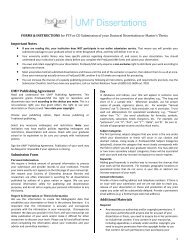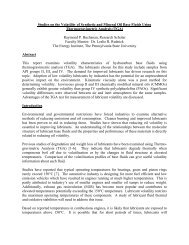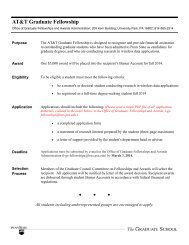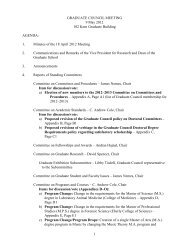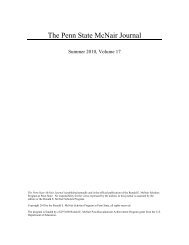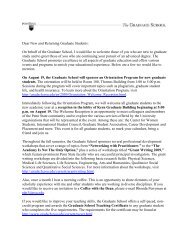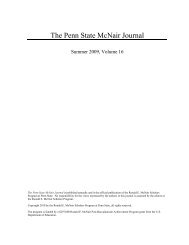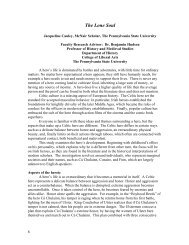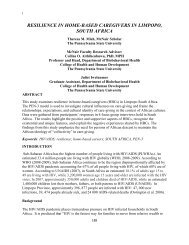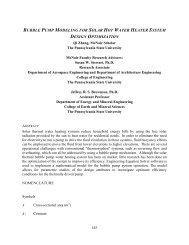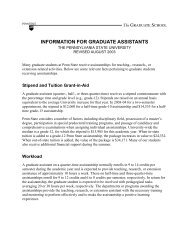The Gendered Language of Sports Teams Names and Logos
The Gendered Language of Sports Teams Names and Logos
The Gendered Language of Sports Teams Names and Logos
Create successful ePaper yourself
Turn your PDF publications into a flip-book with our unique Google optimized e-Paper software.
<strong>The</strong> present study builds on these findings by examining the implications <strong>of</strong> naming<br />
practices for women’s sports team <strong>and</strong> leagues at the pr<strong>of</strong>essional level. While prior research has<br />
focused on team names (Slovenko, 1994) <strong>and</strong> their relationship to gender (Smith, 1997; Eitzen &<br />
Baca Zinn, 1989), none have attempted to apply conclusions to the pr<strong>of</strong>essional domain.<br />
However, it is apparent that gender differentiation in language is as critical an issue in this<br />
environment as it is at the level <strong>of</strong> high school <strong>and</strong> collegiate sports. This is particularly evident<br />
in sports in which males <strong>and</strong> females participate equally. Nationally, athletic associations such as<br />
the National Basketball Association, Major League Baseball, <strong>and</strong> the Pr<strong>of</strong>essional Golf<br />
Association, all refer to an exclusively male athletic environment. Conversely, national women’s<br />
leagues are modified to include feminine references such as “women” <strong>and</strong> “ladies”. Examples<br />
include the Women’s National Basketball Association, <strong>and</strong> Ladies Pr<strong>of</strong>essional Golf<br />
Association. This study argues that although there is no statute that legitimates a separation <strong>of</strong><br />
male <strong>and</strong> female teams for the same sport, or prohibits either gender from participating under the<br />
auspices <strong>of</strong> the same league, through gender differentiation, male <strong>and</strong> female sports leagues are<br />
situated to reinforce the naturalized system gender order present in sport.<br />
A Brief Description <strong>of</strong> the Leagues<br />
Football is commonly regarded as the most male <strong>and</strong> one <strong>of</strong> few remaining sports for<br />
reserved for men (Christiensen et al, 2001). Modeled after European rugby football, the sport pits<br />
men against men in a violent clash <strong>of</strong> aggressive competition. This drive to demonstrate power<br />
<strong>and</strong> control is considered “properly virile <strong>and</strong> thus good training for American boys (Christensen<br />
et al, 2001, p 422). In line with cultural values, however, football has been deemed inappropriate<br />
for women. As a result, football maintains identification with maleness <strong>and</strong> masculinity. Still,<br />
since 1941, women have sought to establish a presence in the sport, through involvement with<br />
high school football teams, participation on men’s teams, <strong>and</strong> the establishment <strong>of</strong> leagues <strong>of</strong><br />
their own. Nevertheless, American knowledge <strong>of</strong> football is limited to the National Football<br />
League, established in 1920.<br />
<strong>The</strong> National Football League (NFL) is currently recognized as the highest level <strong>of</strong><br />
pr<strong>of</strong>essional American football (compared to amateur <strong>and</strong> arena style football). <strong>The</strong> league<br />
consists <strong>of</strong> an American Football Conference (AFC) <strong>and</strong> National Football Conference, made up<br />
<strong>of</strong> thirty-two teams in total. <strong>Teams</strong> are divided evenly (sixteen each) into each conference, which<br />
is further separated into four divisions (North, South, East, West), with four teams belonging to<br />
each. <strong>The</strong> regular season for the sport runs from September to January, with teams competing<br />
within conferences for six play<strong>of</strong>f spots, in the hopes <strong>of</strong> competing in the national championship,<br />
known as the Super Bowl.<br />
<strong>The</strong> Lingerie Football League (LFL) represents one <strong>of</strong> several American Football leagues<br />
for women (other leagues include Women’s Pr<strong>of</strong>essional Football League (1965), National<br />
Women’s Football League (1970), Women’s Pr<strong>of</strong>essional Football League (1999), Independent<br />
Women’s Football League (2001), <strong>and</strong> Women’s Football Alliance (2008)). Created in 2009, the<br />
LFL is accredited as being the fastest growing sports franchise for women in the nation<br />
(Ch<strong>and</strong>ler, 2011). It is modeled after a pay-per-view special called the Lingerie Bowl, originally<br />
intended as an alternative to the NFL’s Super Bowl halftime show. Currently, the league consists<br />
<strong>of</strong> an Eastern <strong>and</strong> Western Conference, with six teams belonging to each. Similarly to the NFL,<br />
32



